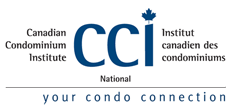18/11/2024– Jurisdiction Ontario
Part 88 published on 01/12/2024
Smoke migration from neighbouring unit caused an unreasonable nuisance
The Applicant claimed that smoke was entering his unit from the unit across the hallway, causing an unreasonable nuisance.
This condominium corporation had introduced a smoking rule with a legacy exemption. The exemption applied to the Respondent (the smoker). The Respondent agreed that she smokes but said that she takes measures to minimize the effect on others, including running two air purifiers, using her exhaust fans and putting a towel at the bottom of her door.
The Tribunal found the smoke was migrating to the Applicant’s unit. The Tribunal also noted that the Applicant had moved in when smoking was permitted and could expect some smokers in the building. However, the Tribunal held that the smoke in question was causing an unreasonable nuisance.
The Tribunal said:
I find that it is more probable than not that Ms. Merritt’s unit is the primary source of smoking odours that migrate to Mr. Kegel’s unit. As noted, the most likely way the odours are transmitted appears to be through cracks around the entrance doors of their respective units.
…
Under the No Smoking Rule, the owner of the legacy unit is required to take steps to stop the migration of smoke or odour from their unit. I accept that Ms. Merritt has taken steps to reduce the impact of her smoking. However, it is apparent that odours still migrate from her unit into the hallway. The Safetech report identifies measures to further reduce the transmission, including improving the seal around her door, applying caulking around the bulkhead of her unit, and sealing cracks around her furnace.
…
I find that to comply with the Rule, Ms. Merritt should bear the cost of the work on her unit to reduce transmission into the hallway.
